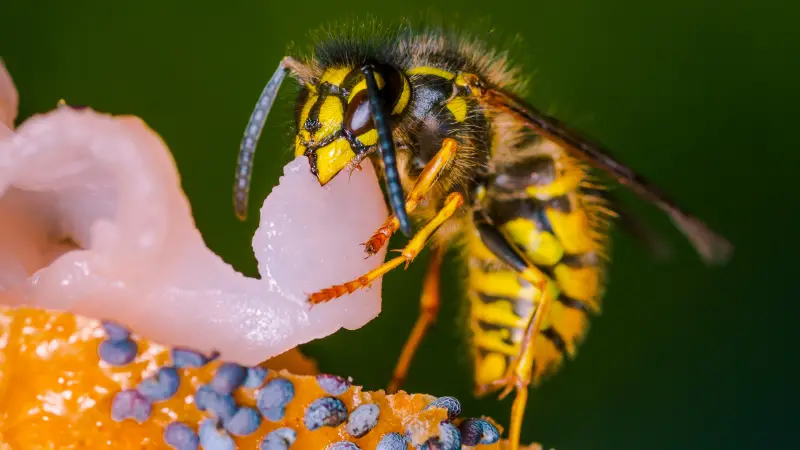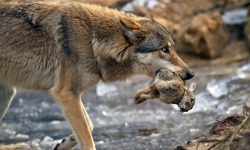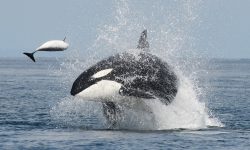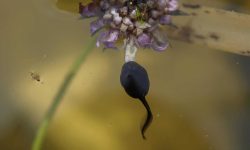Wasps may seem like simple nuisances, but they’re actually intelligent and essential parts of the natural world. While many people think of them only as stingers, these buzzing creatures play a vital role in maintaining ecological balance. Understanding what wasps eat reveals how essential they truly are — both as predators and as pollinators.
Unlike bees, which primarily feed on nectar, wasps have a far more diverse and sometimes surprising diet. They consume everything from sugary plant liquids to live insects and even carrion. Their eating habits vary greatly between species, with some being strict carnivores and others favoring sweet foods.
By exploring the wasp’s diet, we gain valuable insight into how they control pest populations and help pollinate plants. Whether hunting caterpillars or sipping fruit juice, wasps demonstrate remarkable adaptability — making them an important, if often overlooked, part of nature’s food web.
Understanding the Wasp Diet

Wasps as Omnivorous Insects
Wasps are true omnivores, meaning they eat both plant and animal matter. Most adult wasps rely heavily on sugary substances such as nectar, honeydew, and ripe fruit for quick energy. However, their larvae need a high-protein diet, which adults provide by hunting other insects or scavenging meat.
This dual feeding system creates a fascinating balance. Adult wasps collect protein-rich prey to feed their young, while they themselves rely mostly on carbohydrates to fuel constant flight and nest building.
Differences Between Wasp Species
The diet of a wasp depends greatly on its species and environment.
-
Social wasps (like yellowjackets and hornets) are active hunters that feed their larvae insects or meat.
-
Solitary wasps (such as mud daubers) paralyze prey like spiders and store them for their developing young.
-
Parasitic wasps lay eggs inside other insects, letting their larvae feed from within.
Each feeding behavior serves an ecological purpose — controlling pests, decomposing organic material, or aiding pollination.
Seasonal Feeding Patterns
A wasp’s diet also changes with the seasons. In spring and summer, they hunt insects to raise their young. By late summer and fall, their colonies shift toward sweet foods like fruit and nectar as adult wasps prepare for the end of their life cycle.
This transition explains why wasps become more noticeable around picnics and ripe fruit in late summer — they’re seeking sugar to sustain themselves when protein hunting slows down.
20 Foods Wasps Love the Most
1. Nectar
Nectar is one of the most important food sources for adult wasps. Found in flowers, it provides quick, easily digestible sugar for flight and energy.
Wasps often visit the same blossoms as bees, sipping nectar through their long tongues. In doing so, they help transfer pollen between flowers, contributing to pollination.
While not as hairy or efficient as bees, wasps still play a valuable role in maintaining plant diversity through this feeding behavior.
2. Honeydew
Honeydew is a sweet, sticky liquid secreted by aphids and other sap-sucking insects. Wasps feed on it by collecting droplets from plant leaves or stems.
This sugary resource sustains adult wasps when floral nectar is scarce. It’s especially abundant in gardens and forests with dense vegetation.
By consuming honeydew, wasps help control aphid populations indirectly — a small but significant ecological benefit.
3. Ripe Fruit
Wasps are naturally drawn to overripe or fermenting fruits like apples, plums, pears, and grapes. These fruits provide sugars essential for their high-energy lifestyle.
They often feed on fallen fruit or pierce soft skins to reach the juicy interior. As fruit ferments, it becomes even more appealing due to its sweetness and aroma.
This behavior makes wasps frequent visitors to orchards and gardens during late summer and autumn.
4. Tree Sap
Tree sap is a natural source of carbohydrates and minerals. Wasps feed on the sticky exudate produced when tree bark is damaged or naturally oozing.
They lap up the sugary liquid using their mouthparts, gaining both hydration and nutrition.
Tree sap feeding is common among solitary wasps, especially in forested areas where flowers are limited.
5. Insects
Wasps are efficient predators of insects like caterpillars, flies, and beetles. They use their strong mandibles to catch and paralyze prey before carrying it back to their nests.
The captured insects are either eaten directly by larvae or stored as fresh food in sealed brood cells.
This predatory behavior makes wasps valuable allies for gardeners and farmers, as they naturally reduce pest populations.
6. Spiders
Spiders are a favorite prey item for many solitary wasps, particularly mud daubers. The wasp stings and paralyzes the spider without killing it, ensuring freshness for its offspring.
She then seals the immobilized spider inside a mud nest, where the larvae feed on it after hatching.
This hunting method is a perfect example of wasp ingenuity and precision, balancing efficiency with survival strategy.
7. Caterpillars
Caterpillars are soft-bodied and easy to subdue, making them ideal prey for wasps. Both social and solitary species hunt them to feed their larvae.
A single wasp colony can remove thousands of caterpillars in a season, protecting crops and plants from severe defoliation.
Caterpillars provide rich protein content, ensuring rapid larval growth and healthy adult emergence.
8. Flies
Flies are another common target for wasps. They’re abundant, easy to catch, and provide a high-protein meal.
Yellowjackets and paper wasps often snatch flies midair or off carrion. The adult wasps chew the prey into soft pulp before feeding it to their young.
This behavior benefits humans by naturally controlling fly populations in both urban and rural environments.
9. Meat Scraps
Wasps are opportunistic feeders and often scavenge leftover meat or animal remains. Picnic tables and trash bins attract them due to the scent of protein.
They tear off small bits of meat and carry them back to the nest to feed their larvae.
Although this brings them into conflict with humans, it highlights their adaptability and importance as nature’s recyclers.
10. Dead Insects
Wasps do not waste available protein. They often feed on dead insects found on the ground or trapped in spider webs.
This scavenging helps decompose organic material and recycles nutrients back into ecosystems.
Feeding on carrion insects also allows wasps to sustain themselves when hunting live prey is difficult.
11. Pollen
While wasps aren’t as fuzzy as bees, they occasionally consume pollen while foraging for nectar. Pollen adds protein and nutrients to their diet.
They may lick pollen grains from flowers or accidentally ingest them while feeding.
This unintentional pollination benefits plant reproduction, linking wasps to the same ecological role as bees.
12. Sugary Drinks
Sodas, fruit juices, and other sweet beverages mimic natural nectar. Wasps are drawn to these liquids, especially in late summer.
They can smell sugar from far away and quickly gather around open bottles or cups.
While this behavior frustrates picnickers, it reflects their natural craving for carbohydrates before colony decline.
13. Honey
Wasps occasionally raid beehives for honey, stealing the rich, sugary liquid stored by bees. They use their mandibles to tear open wax cells and consume the contents.
This behavior is risky — bees fiercely defend their hives — but the reward is worth it for a desperate or opportunistic wasp.
Honey provides a concentrated energy source, keeping adult wasps active during late-season scarcity.
14. Plant Sap-Sucking Insects
Wasps frequently feed on or near insects like aphids, mealybugs, and scale insects. These pests secrete honeydew, which wasps lap up.
Some wasps even protect these insects in exchange for continuous honeydew access — a fascinating example of mutual benefit.
This interaction highlights how complex wasp feeding relationships can be within ecosystems.
15. Carrion
In addition to scavenging small bits of meat, wasps often feed on larger animal carcasses. They consume decaying flesh or extract fluids from soft tissue.
This scavenging behavior helps decompose dead animals and prevent the spread of disease.
By cleaning up carrion, wasps act as natural waste managers in many environments.
16. Plant Juice
Wasps occasionally feed on the sap or juice of damaged plants, especially fruits with punctured skins. The sugars and amino acids help sustain them between hunts.
They may drink from cuts on stems or bite into soft leaves to release fluid.
This feeding method provides quick hydration during hot, dry weather.
17. Bread and Pastries
Bread, doughnuts, and pastries attract wasps due to their combination of sugar and starch. These foods provide both carbohydrates and small amounts of protein.
Wasps nibble on crumbs or soft sections, carrying bits back to the nest.
Though not natural foods, these items showcase the wasp’s remarkable ability to adapt to human environments.
18. Fruit Juice
Fresh or fermenting fruit juice is one of the strongest attractants for wasps. They drink from overripe fruits or sugary spills in outdoor areas.
The liquid provides instant energy, which adult wasps need for constant movement and nest care.
In vineyards or orchards, this behavior can sometimes lead to conflicts with farmers during harvest season.
19. Ice Cream and Syrup
Sweet human foods like syrup, ice cream, and jams appeal to wasps’ craving for sugar. They lick surfaces or feed from drips to obtain glucose and fructose.
Wasps often appear at dessert stands or outdoor cafés, drawn by sugary scents from afar.
This is why they seem especially persistent around summer treats — it’s their seasonal survival instinct at work.
20. Human Sweat (Minerals)
Surprisingly, wasps sometimes drink human sweat to obtain essential salts and minerals. These electrolytes help regulate their body functions and muscle activity.
They may land on exposed skin, particularly in hot weather, to absorb trace nutrients.
While harmless in most cases, this behavior can startle people — yet it demonstrates just how resourceful and adaptable wasps truly are.
FAQs About What Wasps Eat
Do Wasps Eat Meat?
Yes. Many wasp species hunt insects or scavenge meat to feed their larvae with protein.
Why Do Wasps Like Sweet Foods?
Adult wasps need sugar for energy. Nectar, fruit, and sugary drinks give them the carbohydrates they crave.
Do Wasps Eat Other Insects?
Absolutely. Wasps prey on caterpillars, flies, and beetles, helping control pest populations naturally.
What Do Baby Wasps Eat?
Larvae are fed soft, chewed-up insects or meat by adult wasps, providing them with protein to grow.
Do Wasps Eat Honey?
Some wasps raid beehives or consume leftover honey, especially in late summer when food is limited.
Are Wasps Pollinators?
Yes, many wasps pollinate plants while feeding on nectar, though not as efficiently as bees.
Do Wasps Eat Humans’ Food?
They can — wasps are opportunistic and often feed on sugary or protein-rich human foods.
Why Do Wasps Become Aggressive Around Food?
When food sources are scarce, wasps defend sugary or protein-rich items to sustain their colony.
Do Wasps Eat Every Day?
Yes. They need a steady intake of sugar and protein to maintain flight and care for their young.
Are All Wasps Carnivorous?
Not all. Some are omnivorous, eating both plants and animals, while others rely solely on nectar and insects.
Final Thoughts
Wasps may have a bad reputation, but their diet reveals just how vital they are to nature’s balance. By hunting pests, scavenging organic waste, and pollinating flowers, they support ecosystems far beyond what most people realize.
Their varied diet — from sweet nectar to living prey — shows incredible adaptability and intelligence. Understanding what wasps eat not only reduces fear but also fosters appreciation for these hardworking insects.
The next time you see a wasp hovering near a flower or fruit, remember: it’s not just looking for trouble — it’s looking for lunch.






